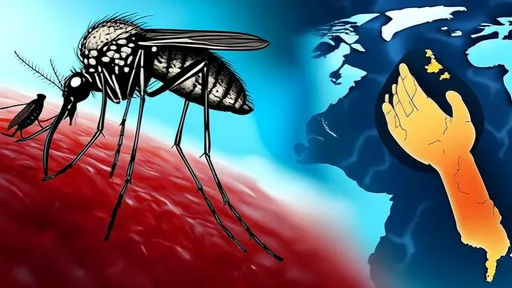The warming of our planet is no longer a distant threat—it is reshaping ecosystems, weather patterns, and even the spread of infectious diseases. As global temperatures rise, tropical diseases once confined to equatorial regions are creeping into temperate zones, posing unprecedented health risks to populations unaccustomed to these illnesses. This shift is not just a future possibility; it is already happening, with malaria, dengue fever, and Zika virus appearing in regions where they were previously unheard of.
Scientists have long warned that climate change would alter the distribution of disease-carrying vectors, such as mosquitoes and ticks. Warmer temperatures extend the breeding seasons of these insects, allowing them to survive in areas that were once too cold for their survival. At the same time, increased rainfall and humidity in some regions create ideal breeding grounds for disease vectors. The result is a slow but steady migration of tropical diseases into parts of Europe, North America, and other temperate regions.
One of the most concerning examples is the spread of Aedes aegypti and Aedes albopictus mosquitoes, which transmit dengue, chikungunya, and Zika. These species, once limited to tropical climates, have now established populations in southern Europe and the southern United States. Local outbreaks of dengue have been reported in France and Croatia, while cases of West Nile virus, another mosquito-borne disease, have surged in parts of Germany and the Netherlands.
Malaria, a disease traditionally associated with sub-Saharan Africa and parts of Southeast Asia, is also showing signs of spreading. While large-scale outbreaks in temperate zones remain rare, sporadic cases have been documented in Greece and Italy. Researchers warn that if warming trends continue, malaria could become endemic in parts of southern Europe within decades. The same holds true for other parasitic diseases, such as leishmaniasis, which is carried by sandflies and has already been detected in new regions.
The implications of this shift are profound. Health systems in temperate countries are often unprepared to diagnose and treat tropical diseases, leading to delays in care and increased mortality. Many doctors in these regions have never encountered diseases like dengue or chikungunya, making misdiagnosis a serious risk. Additionally, the lack of immunity in local populations means that outbreaks could spread more rapidly and with greater severity than in tropical regions where partial immunity exists.
Beyond mosquitoes, ticks are also expanding their range due to climate change. Lyme disease, once primarily a concern in North America and parts of Europe, is now appearing in Scandinavia and Canada at higher latitudes than ever before. Warmer winters allow tick populations to survive and thrive in areas that were previously inhospitable. Similarly, tick-borne encephalitis, a potentially fatal viral infection, has been detected in new regions, including parts of the United Kingdom.
The economic burden of these emerging health threats cannot be ignored. Treating tropical diseases in non-endemic regions is often more expensive due to the need for specialized medications and diagnostics. Hospitals may face unexpected surges in patients during outbreaks, straining resources. Tourism and trade could also be affected if travelers perceive certain regions as high-risk for infectious diseases.
Efforts to combat this trend must focus on both mitigation and adaptation. Reducing greenhouse gas emissions remains critical to slowing the pace of climate change and, by extension, the spread of tropical diseases. At the same time, public health systems must adapt by improving surveillance, training medical professionals, and investing in vector control programs. Communities can also take steps to reduce mosquito breeding sites by eliminating standing water and using insect repellent.
The spread of tropical diseases into temperate zones is a stark reminder that climate change is not just an environmental issue—it is a public health emergency. Without urgent action, the world may face a future where diseases once confined to the tropics become a global norm, threatening millions of lives in regions least equipped to handle them.

By /Jul 25, 2025

By /Jul 25, 2025

By /Jul 25, 2025

By /Jul 25, 2025

By /Jul 25, 2025

By /Jul 25, 2025

By /Jul 25, 2025

By /Jul 25, 2025

By /Jul 25, 2025

By /Jul 25, 2025

By /Jul 25, 2025

By /Jul 25, 2025

By /Jul 25, 2025

By /Jul 25, 2025

By /Jul 25, 2025

By /Jul 25, 2025

By /Jul 25, 2025

By /Jul 25, 2025